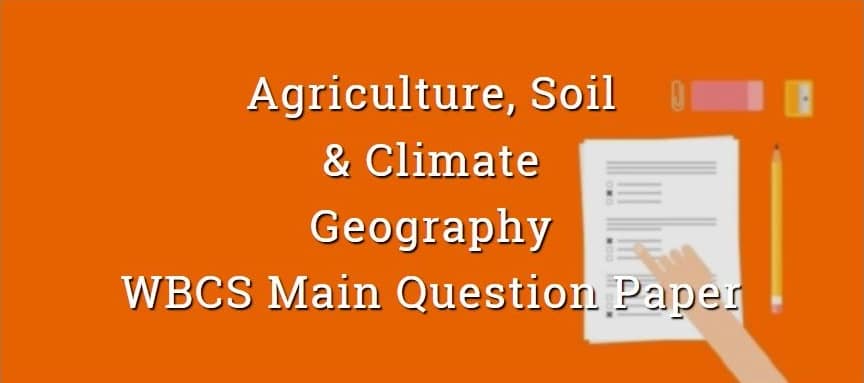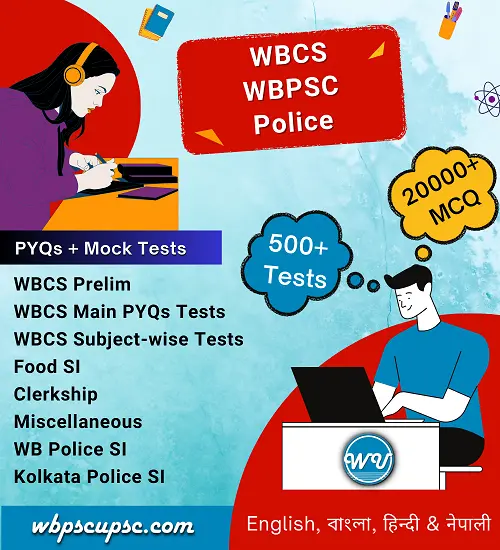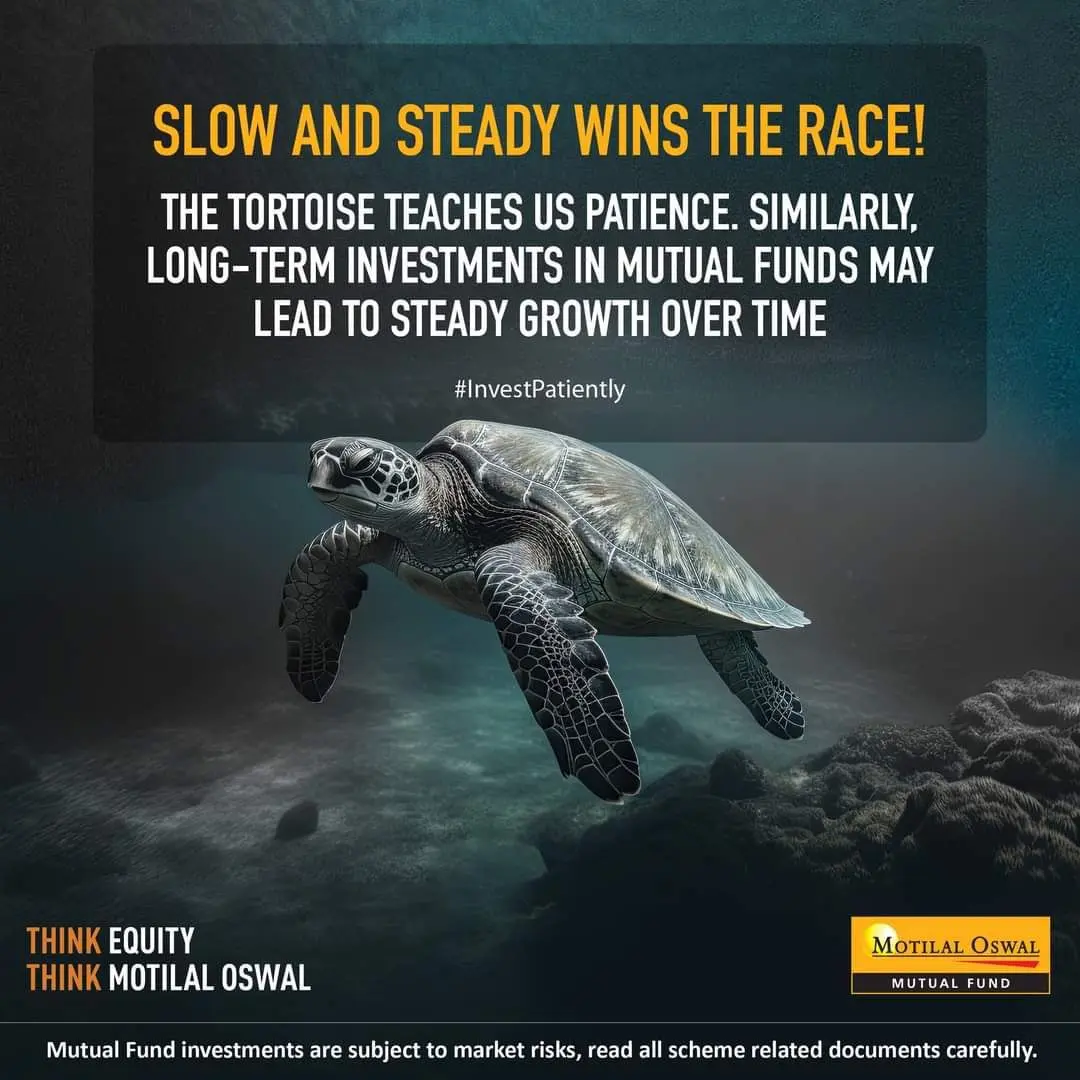April 5, 2020
Agriculture, Soil & Climate – Geography – WBCS Main Question Paper
Contents

agriculture question answers
WBCS Main Question Paper – 2019
11. ______ is the largest producer of tea.
(A) West Bengal
(B) Tamil Nadu
(C) Assam
(D) Karnataka
13. India is the largest exporter of
(A) Orange
(B) Pear
(C) Cashew nuts
(D) Strawberry
15. _________ is the largest producer of sugarcane In India.
(A) Maharashtra
(B) Gujrat
(C) Uttar Pradesh
(D) Madhya Pradesh
22. Muzaffarnagar In Uttar Pradesh is famous for production of
(Sugar Bowl of India)
(A) Millet
(B) Cotton
(C) Tobacco
(D) Sugarcane
24. India is not the leading producers of ______ spices.
(A) Cumin
(B) Cardamom
(C) Ginger
(D) Chilli
29. Saline soil is found in
(A) Estuary of Narmada
(B) Malwa Plateau
(C) Meghalaya Plateau
(D Rajmahal Hills
76. Black soil is mostly found in _____ states of India.
(A) Maharashtra and Gujrat
(B) Maharashtra and Rajasthan
(C) Andhra Pradesh and Kerala
(D) Bihar and Madhya Pradesh
79. The full form of the abbreviation NLM is
(A) Northern Line of Monsoon
(B) Normal Line of Monsoon
(C) Northern Limit of Monsoon
(D) Normal Limit of Monsoon
88. _______ is the highest producer of milk in India.
(A) Uttar Pradesh
(B) Andhra Pradesh
(C) Haryana
(D) Rajasthan
103. Blue revolution is aimed at increasing the production of ____
(A) Milk
(B) Poultry
(C) Shrimp
(D) Indigo
122. According to Koppen’s climatic classification, Kerala has climate.
(A) Tropical monsoon
(B) Tropical moist
(C) Tropical savanna
(D) Cold Humid Winter
123. The western disturbances cause winter precipitation in north-west regions of Indian subcontinent. It originates from
(A) Mediterranean Sea
(B) Aral Sea
(C) Caspian Sea
(D) None of the above
124. _____ crosses the Himalayas and brings dry and stable weather in winter in India.
(A) Easterly Jet Streams
(B) Westerly jet streams
(C) Both easterly and westerly jet streams
(D) South Eastern Monsoon wind
WBCS Main Question Paper – 2018
110. Mumbai receives more rainfall than Pune because
(A) Mumbai is on the windward side
(B) Pune is at a greater elevation.
(C) Mumbai is a coastal city.
(D) Pune has less vegetation.
111. The area with annual rainfall less than 50 cm in a year is
(A) Meghalaya
(B) Leh in Kashmir
(C) Coromondal Coast
(D) Konkan Coast
112. Which one of the following is the wittiest place in India?
(East Khasi Hills, Meghalaya)
(A) Mahabaleswar
(B) Cherapunji
(C) Udhaga-mandalam
(D) Mawsynram
113. Which coasts of India is most affected by tropical cyclones?
(A) Malabar
(B) Andhra
(C) Konkan
(D) Gujarat
114. Which one of the following is the driest region of India ?
(A) Telengana
(B) Marwar
(C) Vidarbha.
(D) Marathwada
115. Western disturbances cause rainfall in the following Indian States during winter
(A) Punjab and Haryana
(B) Bihar and West Bengal
(C) Kerela and Karnataka
(D) M.P. & U.P.
116. Nagpur gets scanty rainfall as it is located towards
(A) Windward side
(B) Seawash side
(C) Onshore side
(D) Leeward side
117. Delhi gets winter rainfall due to
(A) SW Monsoon
(B) NE Monsoon
(C) Conventional rain
(D) Western disturbance
118. Which of the following is the area of lowest pressure over Indian sub-continent during hot dry weather season?
(A) Rann of Kutch
(B) Rajasthan
(C) N-W India
(D) Meghalaya
119. One of the regions that receives rainfall from NE monsoon is
(A) West Bengal
(B) Assam
(C) Kerala
(D) Tamil Nadu
120. If 20% or more area of the country suffers from rain deficits during monsoon, it is termed as
(A) Flood year
(B) Drought year
(C) Famine year
(D) Self sufficient
121. The daily weather map of India is prepared and print at
(India Meteorological Department, Pune)
(India Meteorological Department, Pune)
(A) Kolkata
(B) Mumbai
(C) New Delhi
(D) Pune
140. Watermelons grow the best in
(A) Alluvial soil
(B) Sandy soil
(C) Black soil
(D) Latente soil
141. Laterite soil is found in which of the following states of India?
(A) Haryana and Punjab
(B) Jammu and Kashmir
(C) Gujrat and Rajasthan
(D) Karnataka and Tamil Nadu
142. Saline and alkaline soils in India are also called as
(A) Kallar
(B) Khadar
(C) Regur
(D) Bangar
143. Pruning is an essential part in cultivation of
(A) Rubber
(B) Tobacco
(C) Coffee
(D) Tea
144. The variety of coffee largely grown in India is
(A) Old chicks
(B) Coorgs
(C) Arabica
(D) Kents
145. Under which plan did the Government introduce an agricultural strategy which gave rise to Green Revolution?
(1969-74)
(A) Sixth Five Year Plan
(B) Second FYP
(C) Fourth FYP
(D) Third FYP
146. The production of onion is the highest in
(A) Uttar Pradesh
(B) Madhya Pradesh
(C) Maharashtra
(D) Andhra Pradesh
147. Blue Revolution is related to
(A) Fish production
(B) Milk production
(C) Oil production
(D) Food production
148. The largest irrigated area in India is occupied by
(A) Sugarcane
(B) Rice
(C) Cotton
(D) Wheat
149. Which of the following are not grown in the Kharif season?
(A) Bajra and Rice
(B) Maize and Jowar
(C) Barley and Mustard
(D) Jowar and Rice
150. ‘Operation Flood’ is associated with
(A) Milk production
(B) Wheat production
(C) Flood control
(D) Water harvesting
WBCS Main Question Paper – 2017
147. Which state in India leads in fish consumption?
(A) Odisha
(B) Assam
(C) Kerala (Per Capita 2kg/month)
(D) West Bengal
148. Tobacco cultivated in India is mostly used to make
(A) Cigarette (40%)
(B) Beedi
(C) Zarda
(D) Snuff powder
101. ‘Khadar’ is a younger alluvium usually found in the state of
(A) Bihar
(B) Uttar Pradesh
(C) Rajasthan
(D) Assam
113. Gully erosion on soil surface is more prominent in India in
(A) Chambal area
(B) Bikaner-Jodhpur area
(C) Odisha plain area
(D) Darjeeling hill area
122. The state of Maharashtra has mainly
(A) Red soil
(B) Lateritic soil
(C) Alkaline soil
(D) Black soil
144. The most important human factor responsible for soil erosion in India is
(A) overgrazing
(B) deforestation
(C) over utilization of land and soil
(D) over utilization of groundwater
143. Tank irrigation is more prevalent in
(A) Peninsular India
(B) Brahmaputra valley
(C) Thar desert region
(D) Lower Ganga plains
153. Which region is called “The granary of South India“
(A) Coimbatore
(B) Tiruchirappalli
(C) Thanjavur
(D) Thiruvananthapuram
156. The traditionally most important cotton growing region in India is
(1st – Maharastra )
(A) Tamil Nadu
(B) Indo-Ganga plain
(C) Deccan Trap
(D) Chotanagpur plateau
157. The highest rate of yield of sugarcane is found in the state of
(A) Bihar
(B) Uttar Pradesh
(C) Maharashtra
(D) Tamil Nadu
163. The three indigenous silk worms in India are
(A) Tassar, Gir, Mullet
(B) Eel, Muga, Carp
(C) Tassar, Eri, Muga
(D) Muga, Eel, Gir
164. The most important rice producing district of Andhra Pradesh is ?
(A) Guntur
(B) Vellore
(C) East Godavari
(D) West Godavari
165. Which one of the following crops requires penning for better yields?
(A) Tea
(B) Coffee
(C) Rubber
(D) Mango
110. Which one of the following is correctly matched in terms of average annual rainfall (in mm) ?
(A) Kolkata – 1200
(B) Delhi – 800
(C) Bikaner – 100
(D) Srinagar- 400
115. The maximum variability of annual rainfall in India occurs in
(A) Meghalaya plateau region.
(B) Ganga plain region.
(C) Thar desert region.
(D) Peninsular region.
166. Low rainfall is experienced in Tamil Nadu during the South West/Summer monsoon because
(A) Tamil Nadu is situated in a rain shadow area.
(B) wind blows from land to sea.
(C) temperature is abnormally high.
(D) low moisture in the air
169. The Northern plains of India get rainfall in winter from
(A) the thunderstorms
(B) the easterly depressions
(C) the western disturbances
(D)the retreating monsoon
WBCS Main Question Paper – 2016
74. Regur soil is much suitable for one of the following :
(A) Jute
(B) Coffee
(C) Cotton
(D) Tea
143.Which one of the following is not correctly matched ?
(A) White Revolution – Milk Production
(B) Blue Revolution – Fish Production
(C) Yellow Revolution – Oilseed Production
(D) Green Revolution – Rice Production
144. The highest yield of rice per hectare in India is in
(A) Tamil Nadu
(B) West Bengal
(C) Haryana
(D) Punjab (3838 kg/hectare)
170. What is Jhoom ?
(A) A type of cultivation
(B) A music of tribe
(C) A tribal dance
(D) A type of soil
171. In which region of India tank irrigation is most popular ?
(A) Uttar Pradesh
(B) Rajasthan
(C) Andhra Pradesh
(D) Tamil Nadu
173. Which state is leading producer of coconut ?
(A) Assam
(B) Kerala
(C) Tamil Nadu
(D) Karnataka
146. The ‘rain shadow’ region in India is
(A) the eastern part of Western Ghat
(B) Chotanagpur plateau
(C) Piedmount of Himalayas
(D) the desert
WBCS Main Question Paper – 2015
31. Which one of the following statements is correct ?
(a) Stormy weather conditions is indicated by sudden fall in barometer reading
(b) Copernicus has for the first time stated that the Earth was spherical
(c) Cloudy nights are warmer compared to clear cloudless nights because of absorption of heat from atmosphere and send it towards Earth
(d) None of the above
27. The term ‘Regur’ refers to :
(a) Deltaic alluvial soils
(b) Lateritic soils
(c) Black Cotton Soils
(d) Red and yellow soils
29. The Black Cotton Soil of India –
I. Is mainly distributed over the River valley of the Deccan
Il. Is distributed over the Lava Region of the Deccan
Ill. Has a great capacity of retaining moisture, is extremely fertile at surface
IV. Occupies about 10% of the total area of the country
Choose the correct Code
(a) I, II & III
(b) I, III & IV
(c) II & III
(d) III & IV
94. Peaty soil is found in
(black, heavy & acidic)
(a) Kerala
(b) Assam
(c) Manipur
(d) Gujarat
26. The immediate cause for the SE Trades to cross the equator and blow as SW Monsoon winds over India is the :
(a) Intense low pressure over Tibet
(b) Heated Ganga Plain
(c) Intense low pressure are of Thar desert
(d) High temperature over Chhotonagpur Plateau
28. The EL Nino which influence the Indian monsoon is –
(a) A cold ocean current that flows Northward along the Coast of Chile
(b) A warm ocean current that flows Westwards along the Coast of Ecuador and Peru
(c) A low pressure system over Western Coast of Spain
(d) None of the above.
37. Drought is called when
(average – 25%)
(a) Shortage of annual rain fall is by more than 50%
(b) Shortage of annual rain fall by more than 80%
(c) Shortage of annual rain fall by more than 60%
(d) None of the above
85. Which of the following time, the highest temperature is found in the Earth ?
(actualy 3 to 4 pm)
(a) 12 NOON
(b) 2 P.M
(c) 1 P.M
(d) 12.30 P.M
14. Which one of the following sets of conditions is necessary for a good cultivation of Wheat?
(a) Moderate temperature and moderate rainfall
(b) High temperature and heavy rainfall
(c) High temperature and moderate rainfall
(d) Low temperature and low rainfall
42. Which state in India has the largest proportion of its net irrigated area under well irrigation
(55%)
(a) Haryana
(b) Bihar
(c) Gujarat
(d) West Bengal
43. State is called the ‘Sugar Bowl of India’
(a) Uttar Pradesh
(b) Punjab
(c) Andhra Pradesh
(d) Bihar
45. Sugarcane cultivation in India is an example of
(a) Plantation agriculture
(b) Shifting cultivation
(c) Irrigated cultivation
(d) Mechanized cultivation
46. What is Jhum ?
(a) A type of cultivation
(b) A type of swinging basket
(c) A river valley in a dry region
(d) A tribal dance in MP
70. Which one of the following areas of India produces largest amount of cotton ?
(a) North western India and Gangetic Paschim Banga
(b) North Western and Western India
(c) Western and Southern India
(d) Plains of Northern India
77. Which of the following factors are responsible for the rapid growth of sugar production in South India as compared to North India ?
(a) Higher per acre yield of Sugarcane
(b) Higher Sucrose content of Sugarcane
(c) Lower Labour cost
(d) Longer crushing period
Choose the correct Code
(a) a & b
(b) a, b & c
(c) a, c & d
(d) a, b & d
82. Golden Revolution refers to:
(Nirpakh Tutej)
(a) Apiculture
(b) Horticulture
(c) Sericulture
(d) None of the above
89. Which of the following crops are most suitable for cultivation under scanty rainfall?
I. Horse gram
Il. Rice
Ill. Mustard
IV. Wheat
(a) I and II
(b) II and IV
(c) II and III
(d) I and III
95. Among the following which one is related to Blue Revolution of India ?
(a) Horticulture
(b) Sericulture
(c) Pisciculture
(d) Floriculture
WBCS Main Question Paper – 2014
56. The Bhabar is composed of
(a) Old alluvium
(b) New alluvium
(c) Gravel and Unsorted sediments
(d) None of the above
57. Bhangar is
(a) Older alluvium
(b) Newer alluvium
(c) Coarse sand
(d) None of the above
58. Pat lands are
(flat topped plateau)
(a) Stepped Plateau
(b) High level laterite plateau
(c) Flat topped hills
(d) Plateau with isolated hills
59. Tarai soils are
(a) rich in phosphate
(c) mature in nature
(b) deficient in organic matter
(d) rich in nitrogen
93. Lateritic soil is not deficient in
(a) Lime
(b) Iron
(c) Organic matter
(d) Phosphate
61. Which statement is not true for monsoon?
(a) Monsoons are large scale seasonal wind systems
(b) There is complete reversal of winds
(c) Rhythm is key note of the monsoonal climate
(d) Monsoons are not affected by ENSO
62. The wind force is in range of Beaufort scale 6 to 12, it is
(a) Tropical Depression
(c) Tropical Disturbance
(b) Tropical Storm
(d) Hurricane
82. Which one is not impact of green revolution on large farmers?
(a) Rapid increase in agricultural productivity
(b) Fast adoption of agricultural innovations and high yielding variety of seeds
(c) Little or no change in consumption
(d) Better standard of life
84. Whittlesey’s agricultural systems are based on
(a) Empirical technique
(b) Statistical technique
(c) Normative technique
(d) qualitative cum Quantitative technique
85. For which spice is Kashmir famous?
(a) Cinnamon
(b) Cloves
(c) Saffron
(d) Black Pepper
98. In land use and crop intensity model of Von Thunen’s zone of crop farming, follow and pasture is nearer to the city than
(a) Market gardening and milk production
(b) Fire wood and lumber production
(c) Three field system
(d) Crop farming without fallow
83. Food security involves
(a) Adequate physical availability of food
(b) Reliable and nutritionally adequate supply of food
(c) Timely supply of food
(d) All of the above


